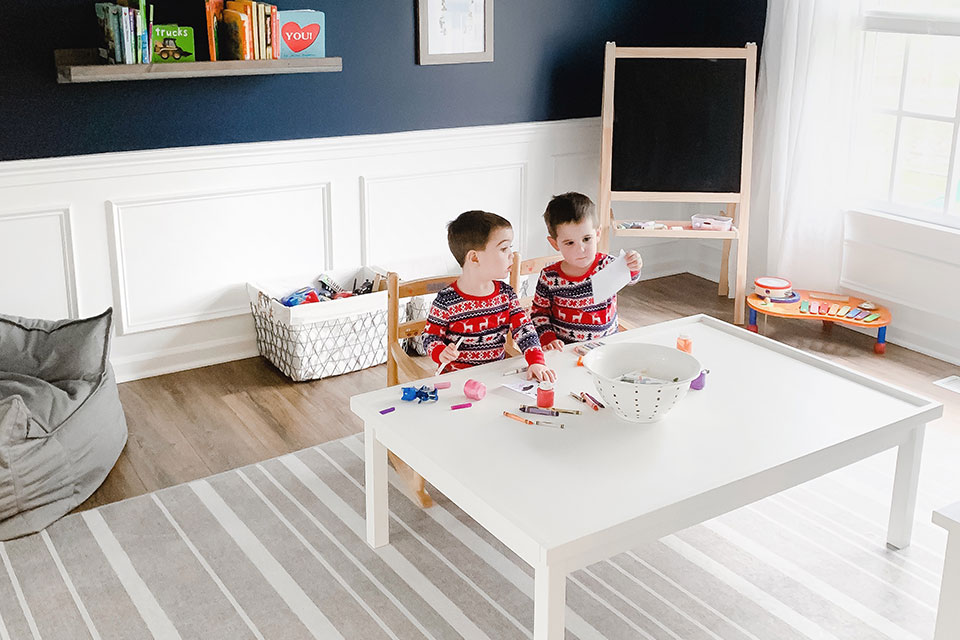
With public school and daycare closing, parents have had a real-life taste of how to homeschool their kids in the last six weeks. While some parents have already started getting the hang of it, a lot of us still struggle—especially those who now find themselves juggling homeschooling, working remotely, entertaining toddlers, and general household responsibilities. And if you have multiple kids…well, let’s just say you are rockstars!
So in the service of all the hardworking parents out there who are wondering how homeschool moms are doing it, we have done our homework. Here we share some homeschooling tips on how to teach young kids at home (without losing it).
1. Create a designated homeschool area.
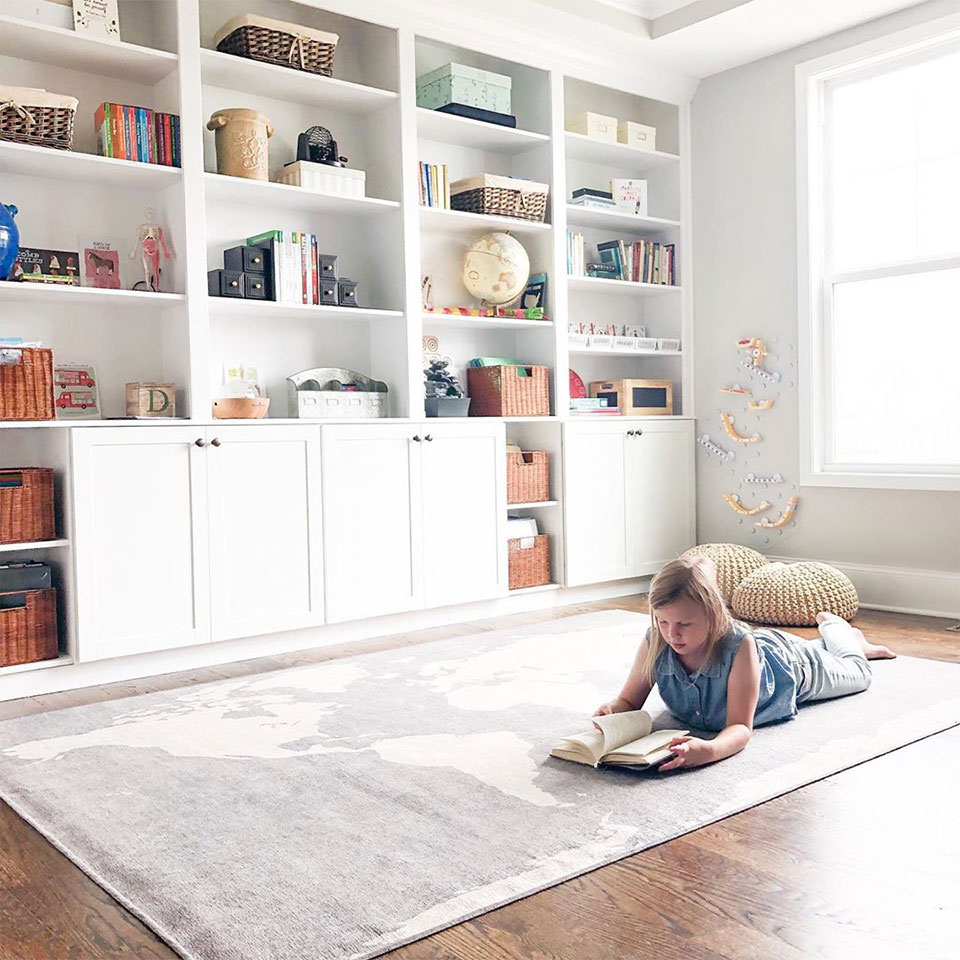
Just as a dedicated workspace can help you get into a work mindset, a designated homeschool space where kids can do their classwork can help them focus and avoid distractions. Moreover, it will eliminate the extra time spent gathering and locating materials for schoolwork.
“Having a convenient and comfortable space with everything you need helps the process feel more natural and less chaotic for everyone,” says Crystal Bogenschutz of @catchingupwithcrystal. “It also helps kids learn how to get and put back their own materials.”
2. No extra room? No problem.
Not every household is blessed with an extra room for homeschooling. The good news is that you can always transform a corner of your kitchen, dining room, or living room into an instant homeschool.
“Dining room tables work great for homeschooling,” says Chelsea Brownfield of @thebrownfieldbabes. “You can hang a few shelves to store supplies in baskets without taking up any floor space.”
And don’t just limit yourself to your indoor space. Your backyard, patio, or even the garage can provide plenty of space to explore and learn. “My kids love writing their name and spelling words with sidewalk chalk outside,” Chelsea adds. “It provides a change of pace and gets them outside.
3. Start with basic school supplies.
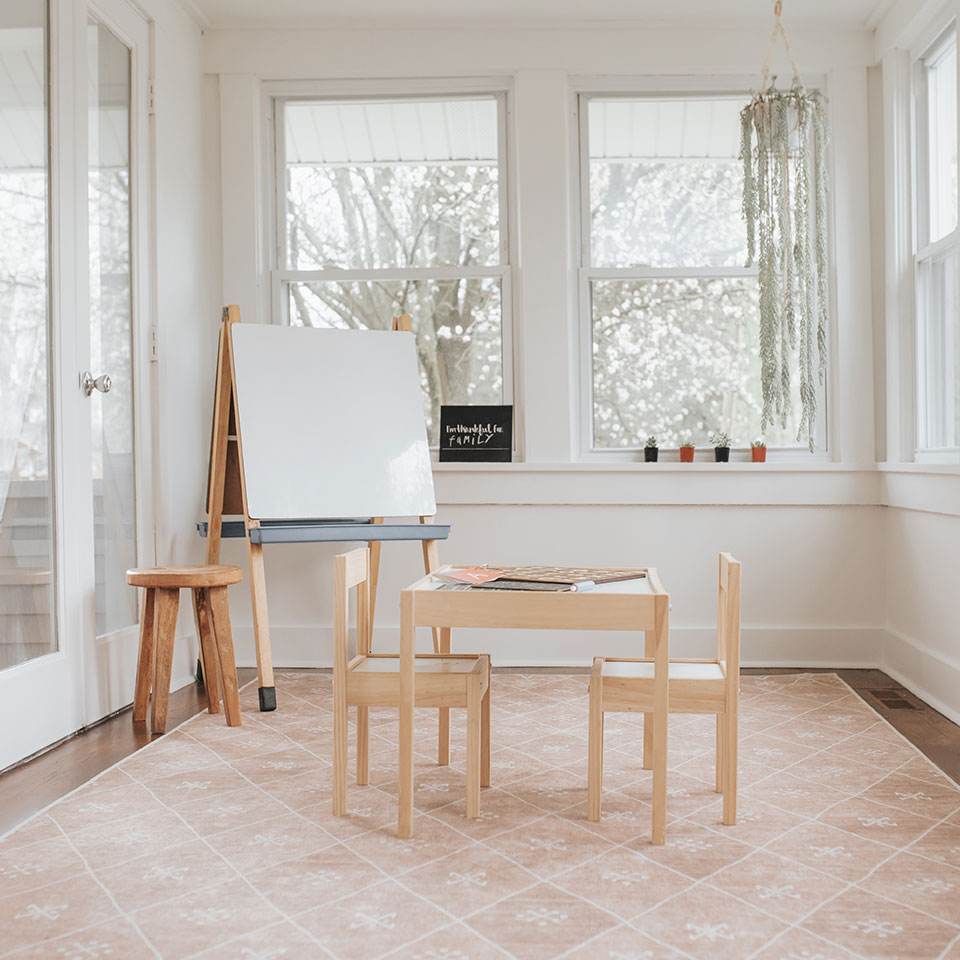
If you’re just starting out, gather the supplies and materials you already have. From there, start building up your stash as you need them. For starters, here’s a list of things you would need:
1) A table for you and your children to sit together.
2) Visual and hands-on learning tools: books, flashcards, chalkboards, puzzles, educational toys, etc.
3) School and craft supplies: pencils, erasers, pencil sharpeners, markers, crayons, scissors, tape, glue, paint, construction paper, lined paper, etc.
4) Some storage bins for the said supplies.
5) A Printer for printing free online resources.
6) A binder or corkboard to house your kids’ crafts and work.
7). A good washable kids rug for the inevitable spills!
4. Find a homeschool curriculum or schedule that works for your family.
Most public schools provide students with an online version of their curriculum. If there isn’t one, or if you’re looking for something to supplement what you have, there are plenty of resources available online.
When choosing a curriculum, Chelsea suggests choosing one that complements your child’s learning style. “There are lots of learning styles and some children respond and learn best from different curriculum approaches,” she said. “It took me several different curriculums to find the one that worked best for our family.”
5. Let every moment be a learning opportunity.
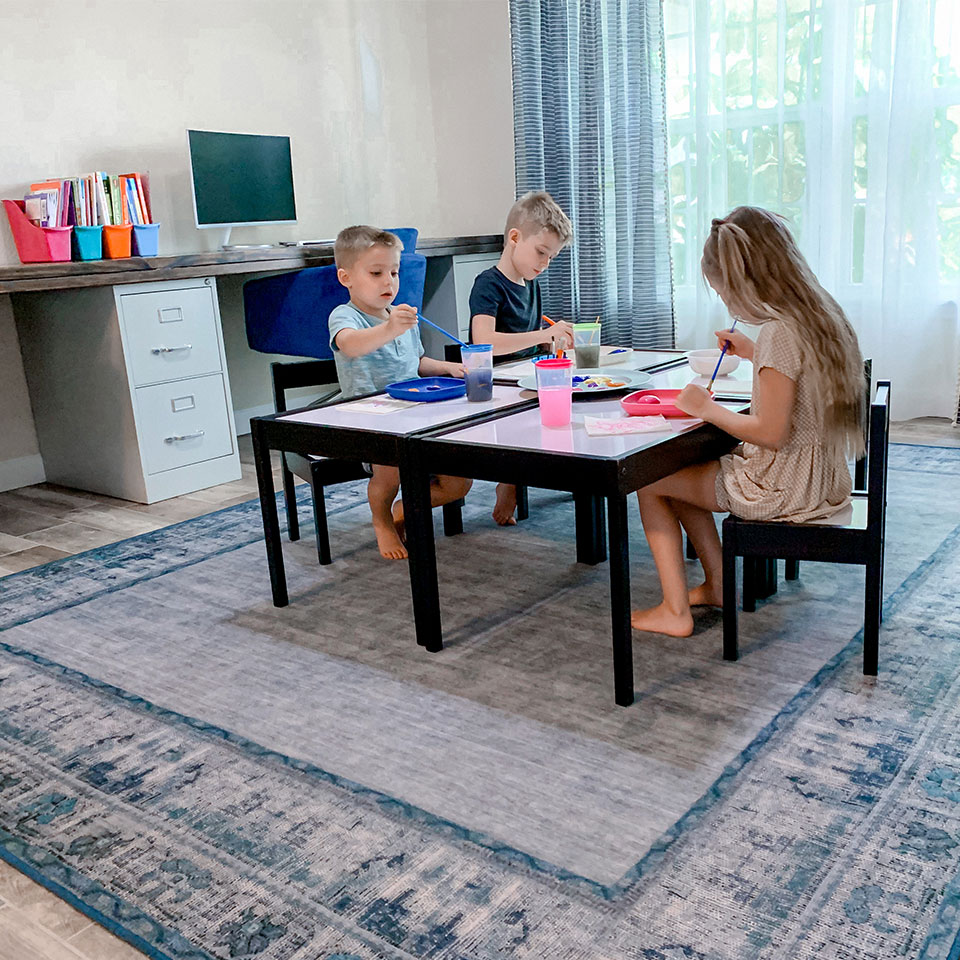
When teaching your kids at home, most parents only think about the academic part of it. But according to Chelsea, there are many things—including problem-solving, fine motor, and other real-life skills—that children can learn from playing and doing routine activities at home.
“Don’t feel the need to imitate a structured classroom,” she says. “Study things that interest your children and turn their interests into a fun study, and dig deeper! Let every moment be a learning opportunity. Cooking, putting away grocery, doing household chores—there’s more to learning than just workbooks.”
6. Know that some days will be hard—and that’s okay.
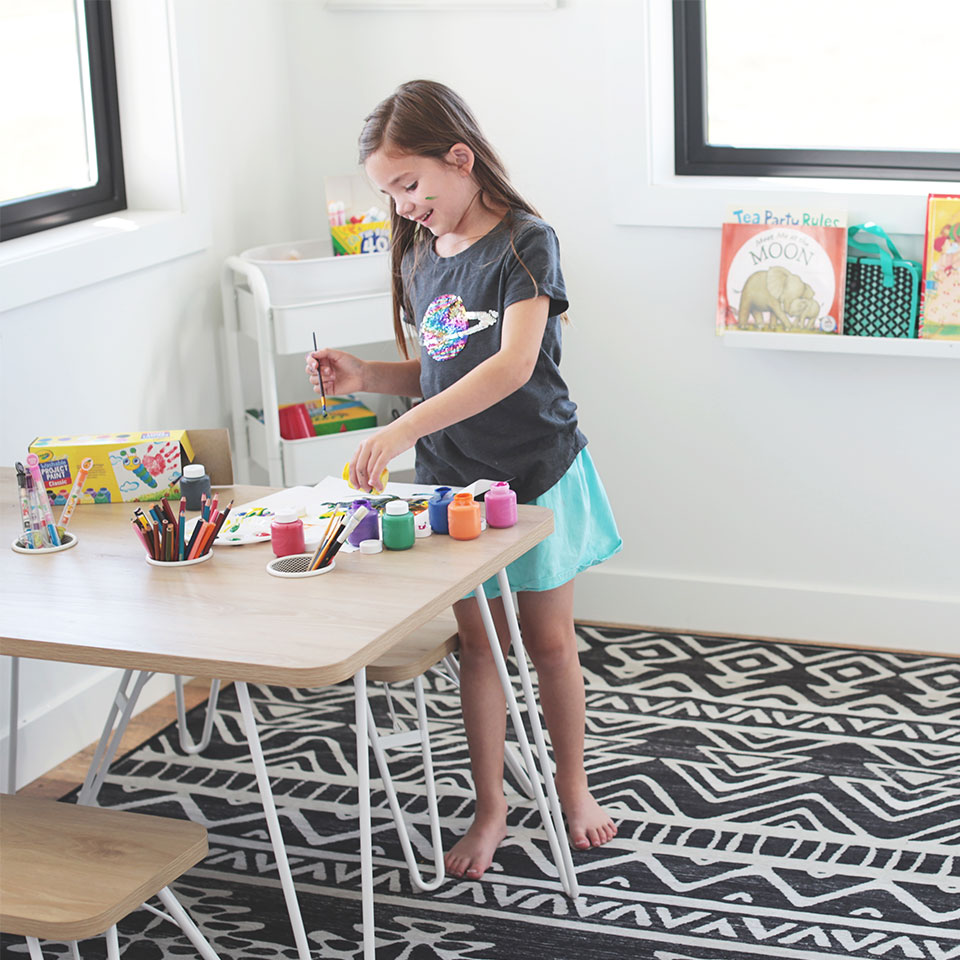
This is probably the most important homeschooling tip we got: There is no one perfect way to homeschool our children. We’ll probably make lots of mistakes along the way and it’s okay. Our kids WILL BE okay.
“I think it’s important for parents and caregivers to keep in mind that we are working and teaching our children at home—all while in the middle of a worldwide crisis,” says Lauren of @fargofarmouse. “This isn’t normal, and there’s no perfect way to go about teaching your children right now. We’re all doing the best we can with what we have. We don’t harp on perfection, and we will all get through this together.”
“Some days will be harder than others and that’s okay,” adds Chelsea. “Be flexible and patient with yourself and your children. You’re doing awesome!”
READERS: Are you homeschooling your kids right now? What are the challenges you’re facing and how are you dealing with them? Share your thoughts in the comments section below!

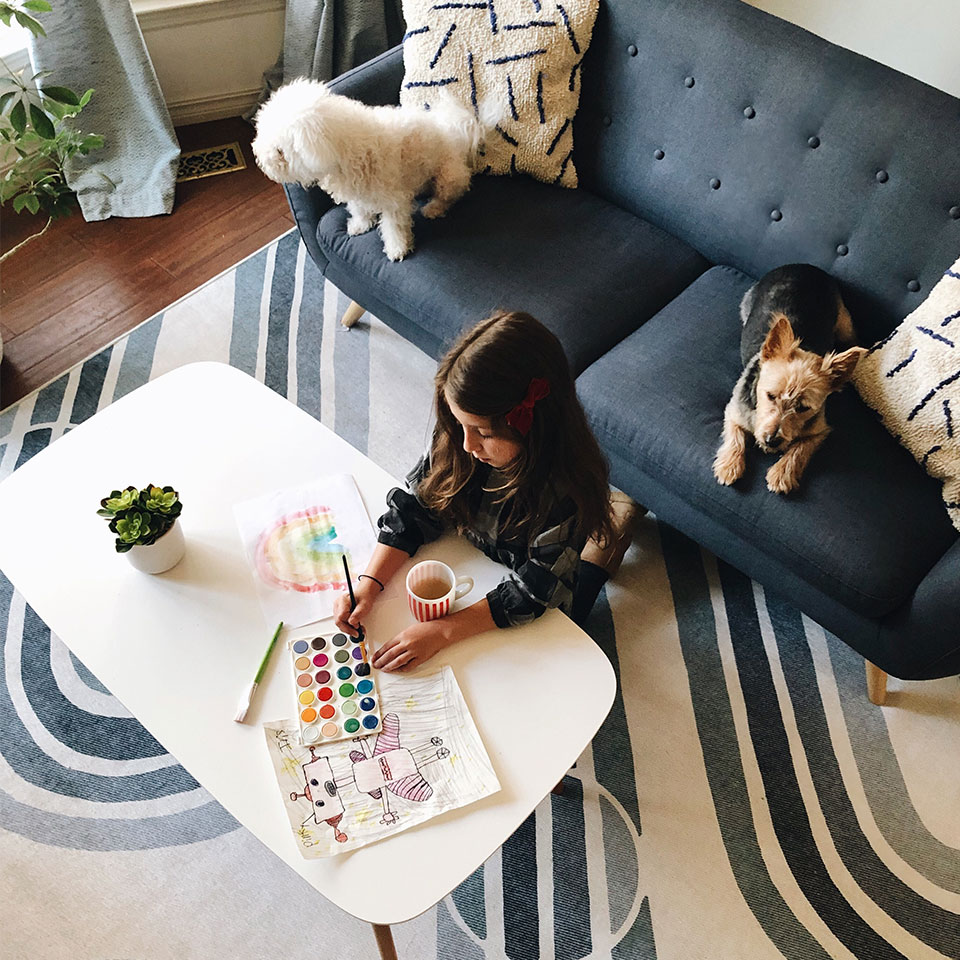
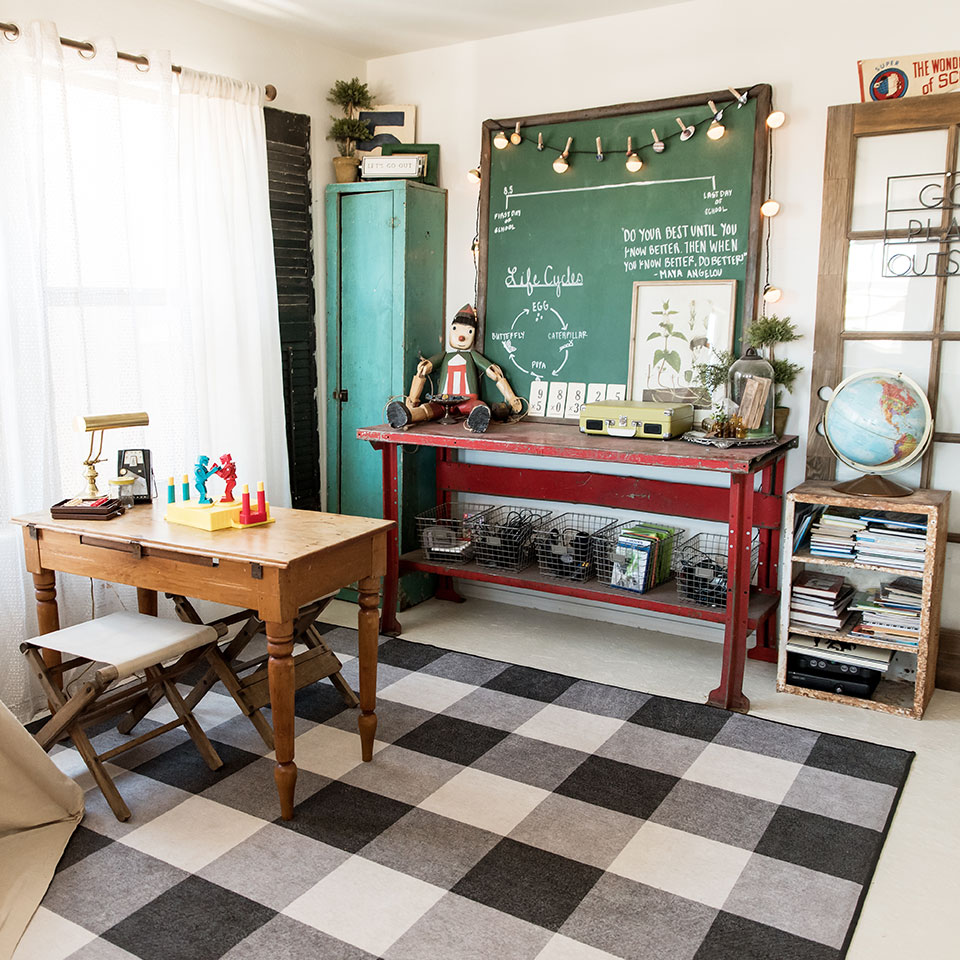
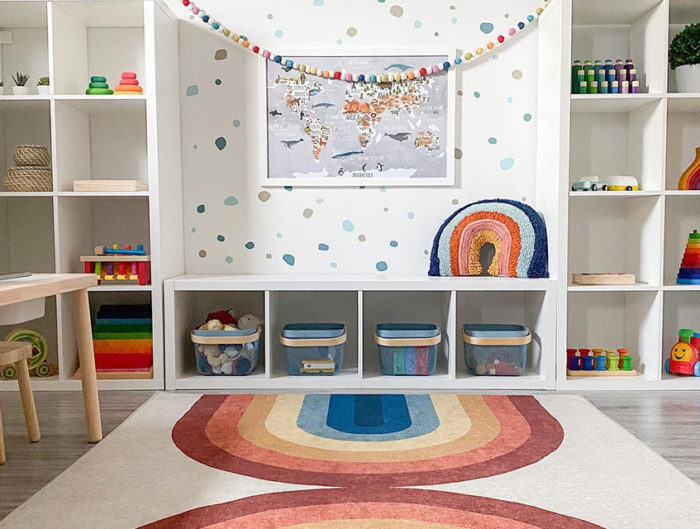
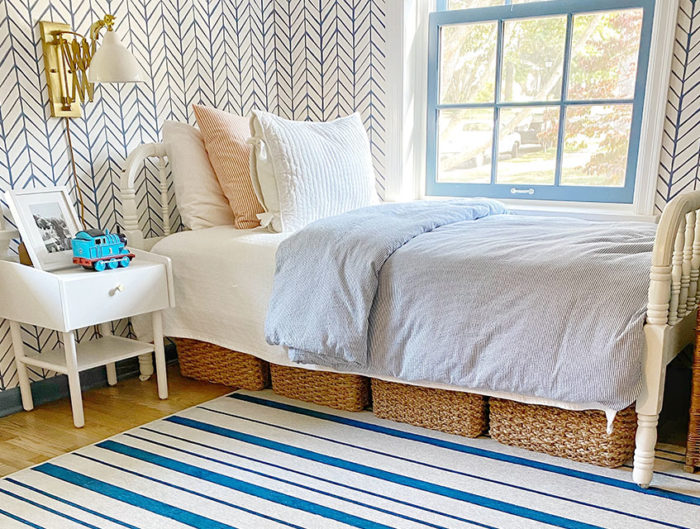
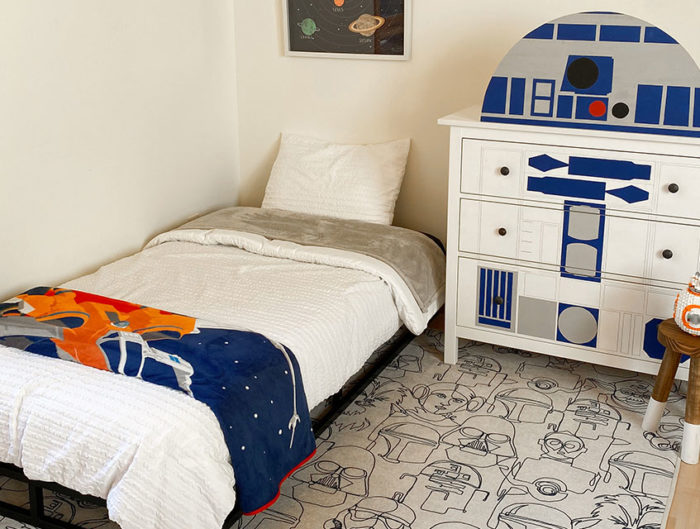


Comment
Love to see this article ! I must agree living room design play an important role in the development of any children.